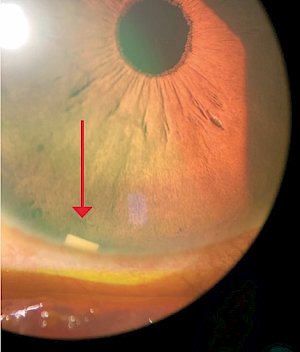Durysta Eye Implants
Dyrysta is a safe, effective implant used to release medication into the eye for the treatment of Glaucoma.
Glaucoma is a chronic eye condition which can lead to damage of the optic nerve, due to increased intraocular eye pressure (IOP). Left untreated, glaucoma can lead to progressive vision loss and even blindness. Durysta implants can lower IPO for upwards of 3 years.
What is Durysta (Bimatoprost Implants)?
Durysta (bimatoprost) is a type of glaucoma medication we call prostaglandin analogues. These medications have been used for many years in eye drop form, and they work by increasing the drainage of fluid from the eye (otherwise known as aqueous humor) thereby reducing eye pressure and lowering the risk of damage to the optic nerve.
Durysta is an implant that slowly releases the glaucoma medication over time and can replace eye drops in a lot of patients. Although studies have shown it can lower eye pressure for up to 11 months, many patients over the years have low eye pressure for 2-3 years after the Durysta implant. It all depends the specific situation of the patient and the eye being treated.
Benefits of Durysta
There are many benefits to treating glaucoma with Durysta. They include:
- It's extremely safe.
- It can lower IOP for upwards of 3 years.
- It can help decrease or eliminate medication burden.
Video Overview of Durysta
Listen to Dr.Solá-Del Valle discuss what patients will experience with Durysta.
Can Durysta help your glaucoma symptoms?
How is it Done?
 Typically, we'll ask you to come to the office 45-60 minutes before the procedure, so that we can prepare the eye for the Durysta implant. One of our skilled staff members will corroborate the eye being treated (and mark the eye), make sure a consent form has been obtained, and place eye drops in the eye. When the eye surgeon walks in to do the procedure, we'll preform a safety check on more time, placing numbing drop in both eyes to minimize blinking, and then we'll use a specially designed applicator to place the Durysta implant into the front part of your eye. Then, our staff members will apply eye drops that will help prevent infections.
Typically, we'll ask you to come to the office 45-60 minutes before the procedure, so that we can prepare the eye for the Durysta implant. One of our skilled staff members will corroborate the eye being treated (and mark the eye), make sure a consent form has been obtained, and place eye drops in the eye. When the eye surgeon walks in to do the procedure, we'll preform a safety check on more time, placing numbing drop in both eyes to minimize blinking, and then we'll use a specially designed applicator to place the Durysta implant into the front part of your eye. Then, our staff members will apply eye drops that will help prevent infections.
Importantly, you must stay upright for 1 hour after the procedure, but you can go home immediately after the implantation is complete.
What is the Follow-Up?
You'll typically return in 2-3 weeks to check the eye pressure, check the drainage system of the eye, and make sure that no further treatment is needed in the short term. At that point, if the other eye needs Durysta, we can book the procedure for the other eye.
It's common to experience some mild discomfort, mild redness, or mild blurred vision after the Durysta procedure. However, these side effects are usually temporary and only last from a few hours to a few days. No treatment is usually needed. Rarely, we may prescribe eye drops or other medications to manage any discomfort or inflammation.
Over time, Durysta should work to reduce intraocular pressure, reduce medication burder and help protect your visioin.
Ongoing Monitoring
Remember that as of today there is no cure for glaucoma, so you will still need monitoring after Durysta. Our team of talented optometrists will help the eye surgeon monitor your eyes.
Schedule an appointment at one of our convenient locations.

